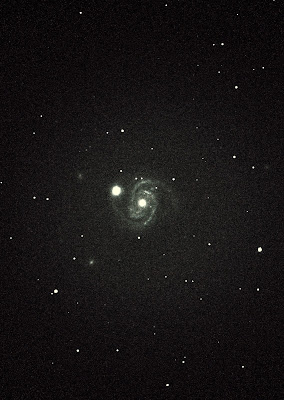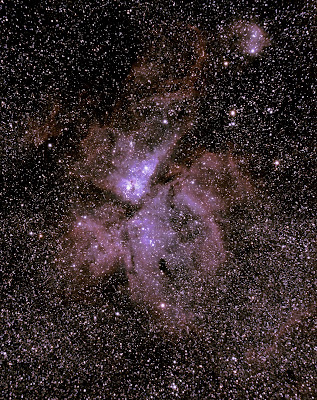Supernovae are quite rare in a given galaxy, but astronomers use to detect hundreds of them every year, by surveying a large sample of galaxies.
Below are two of them, detected almost simultaneously.
The first one, labelled
SN2023axu, is located not far in the sky from Sirius, the brightest star. We captured it when shining at a reasonable magnitude of 14.6, within the outskirts of the tiny galaxy NGC2283 (CMa), distant of some 33 million light-years.
To identify the supernova among the stars, you may need some help from the bottom picture, where it is marked by the two lines...
The other one, labelled
SN2023bee, shown up in a more distant galaxy, NGC2708 (Hya), located some 85 million light-years away. Even so, at a magnitude of 13.4, it looks much brighter than "
axu", hence evidencing a much more powerful stellar explosion... Hereafter we display a picture that we took near its maximum magnitude, followed by the marked view to identify the supernova :
Photos: Cristian Valenzuela / Observatorio del Pangue - February 24th, 2023
Canon 60D at prime focus of SCT Meade LX200 16" reduced at f/6, ISO 4000, total exposure 14 minutes. North is up.














